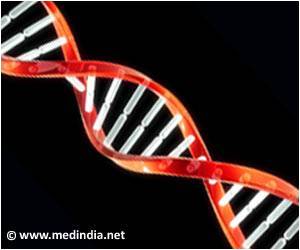Additionally, the research team has mapped the key cell types and mechanisms that are linked to disease. The findings were published Thursday in Nature Genetics.
‘The genome-wide association study pinpoints new target genes, cell types, and mechanisms for treating chronic kidney disease that affects 850 people million worldwide.’
The study provides one of the clearest pictures to date of the genetic underpinnings of chronic kidney disease. And it paves the way for the identification of potential treatments, which are critically needed, according to principal investigator Katalin Susztak, MD, PhD, a professor in the division of Renal-Electrolyte and Hypertension at Penn, who led the research with lead author Xin Sheng, PhD, a postdoctoral fellow at Penn.
“This is a key roadmap for understanding the mechanisms of chronic kidney disease,” Susztak said. “Fortunately, some of the genes we’ve identified for kidney disease can be targeted with existing drugs.”
Chronic kidney disease is a growing global health problem as well as an economic burden. Total Medicare spending for patients with kidney failure reached $36.6 billion in 2018, accounting for about 7 percent of all Medicare paid claims costs, according to the Centers for Disease Control and Prevention (CDC). Though diabetes and high blood pressure play key roles in chronic kidney disease development, the disease has a strong heritable component, and genetic factors are increasingly recognized to contribute to disease risk.
To better understand the genetic variations associated with kidney disease, researchers have turned to genome-wide association studies (GWAS), which involve scanning DNA variations across the complete genome in hundreds of thousands of people. Existing genetic studies have identified around 300 regions in the human genome that are associated with kidney disease, but these maps have not been able to pinpoint specific genes, cell types, and mechanisms.
“The existing maps have indicated regions in the genome for kidney disease heritability, like an initial treasure map, but, until now, we did not know where the treasure chest was located or how it looked,” Susztak said. “Our goal was to find the exact location of the treasure and to open up the box to see what was inside.”
One key challenge in translating genetic maps to specific genes is that most of the genetic variants that can cause kidney disease alter how the genes are regulated. To overcome this challenge, researchers collected 659 human kidney samples a large population. After manually dissecting each tissue sample, they analyzed the expression of each gene and the genetic variation.
The team next generated gene expression and regulation data for each human kidney cell type using a newly-developed single cell sequencing method. This enabled the researchers to identify the key cell types where the genetic variant induces a faulty expression of genes. Their results identified nearly 200 genes for kidney function, as well as nearly 100 genes for hypertension. Finally, the researchers clarified the mechanisms behind several existing kidney disease drugs including angiotensin converting enzyme inhibitors and angiotensin receptor blockers showing that they matched with the genes implicated in the disease.
“We have used these drugs for several decades, but now we know why they work so effectively,” Susztak said. “This study represents a very important milestone for the nephrology field and the millions of patients currently affected by chronic kidney disease.”
This research was supported by the National Institutes of Health (R01 DK105821, R01 DK087635, and R01 DK076077) and by the Foundation of the NIH Type 2 diabetes Accelerated Medicine Partnership Project.
Source: Eurekalert



